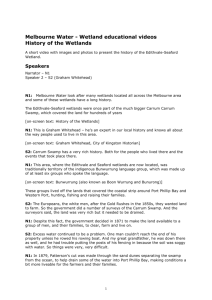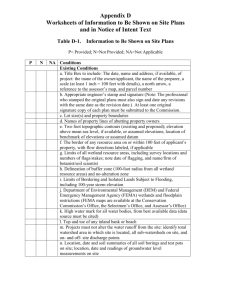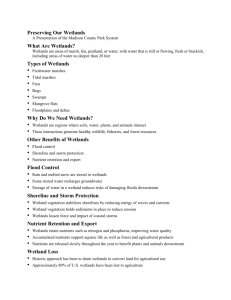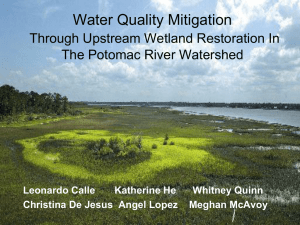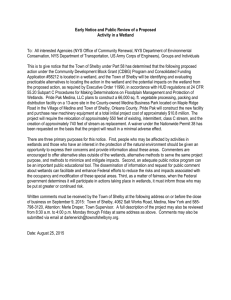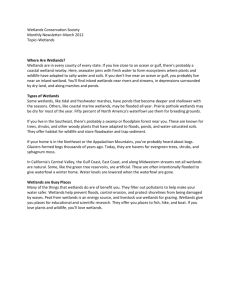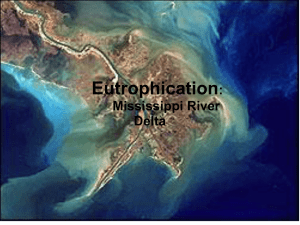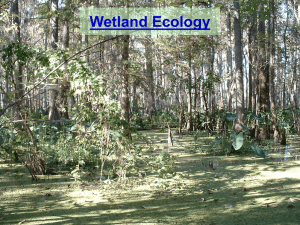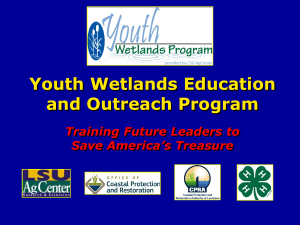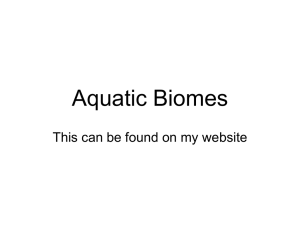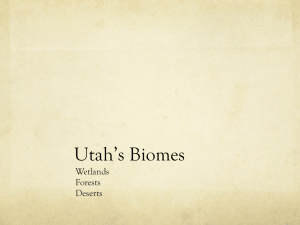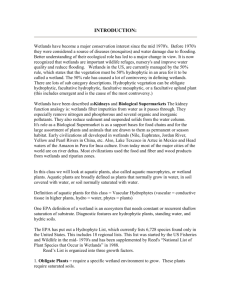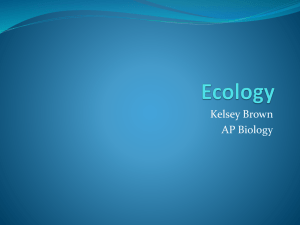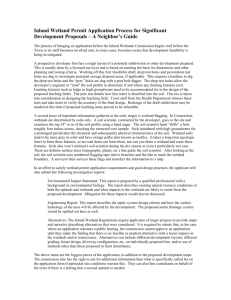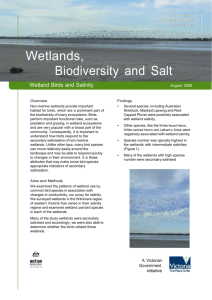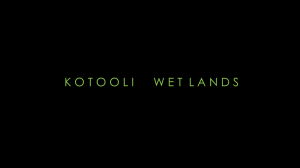Wetlands Project Part 3
advertisement
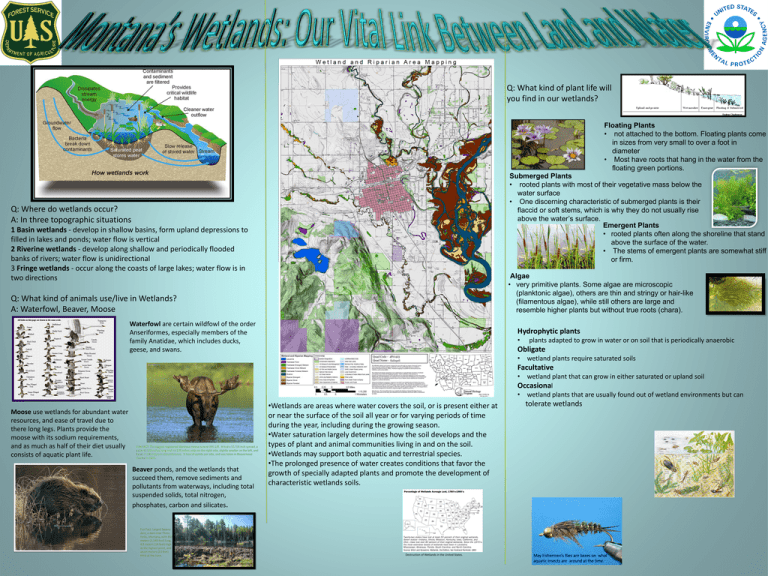
Q: What kind of plant life will you find in our wetlands? Floating Plants • not attached to the bottom. Floating plants come in sizes from very small to over a foot in diameter • Most have roots that hang in the water from the floating green portions. Submerged Plants • rooted plants with most of their vegetative mass below the water surface • One discerning characteristic of submerged plants is their flaccid or soft stems, which is why they do not usually rise above the water’s surface. Emergent Plants • rooted plants often along the shoreline that stand above the surface of the water. • The stems of emergent plants are somewhat stiff or firm. Q: Where do wetlands occur? A: In three topographic situations 1 Basin wetlands - develop in shallow basins, form upland depressions to filled in lakes and ponds; water flow is vertical 2 Riverine wetlands - develop along shallow and periodically flooded banks of rivers; water flow is unidirectional 3 Fringe wetlands - occur along the coasts of large lakes; water flow is in two directions Algae • very primitive plants. Some algae are microscopic (planktonic algae), others are thin and stringy or hair-like (filamentous algae), while still others are large and resemble higher plants but without true roots (chara). Q: What kind of animals use/live in Wetlands? A: Waterfowl, Beaver, Moose Waterfowl are certain wildfowl of the order Anseriformes, especially members of the family Anatidae, which includes ducks, geese, and swans. Hydrophytic plants • plants adapted to grow in water or on soil that is periodically anaerobic Obligate • wetland plants require saturated soils Facultative • wetland plant that can grow in either saturated or upland soil Occasional • wetland plants that are usually found out of wetland environments but can Moose use wetlands for abundant water resources, and ease of travel due to there long legs. Plants provide the moose with its sodium requirements, and as much as half of their diet usually consists of aquatic plant life. FUN FACT: The biggest registered Montana moose scored 195 1/8. It had a 55 7/8 inch spread, a palm 43 1/8 inches long and 15 1/8 inches wide on the right side, slightly smaller on the left, and bases 7 3/8 inches in circumference. It had 14 points per side, and was taken in Beaverhead County in 1952. Beaver ponds, and the wetlands that succeed them, remove sediments and pollutants from waterways, including total suspended solids, total nitrogen, phosphates, carbon and silicates. Fun Fact: Largest beaver dam, a dam near Three Forks, Montana, with 652 meters (2,140 feet) long, 4.3 meters (14 feet) high at the highest point, and seven meters (23 feet) thick at the base. •Wetlands are areas where water covers the soil, or is present either at or near the surface of the soil all year or for varying periods of time during the year, including during the growing season. •Water saturation largely determines how the soil develops and the types of plant and animal communities living in and on the soil. •Wetlands may support both aquatic and terrestrial species. •The prolonged presence of water creates conditions that favor the growth of specially adapted plants and promote the development of characteristic wetlands soils. Destruction of Wetlands in the United States. Not Actual Largest Dam. tolerate wetlands May Fishermen’s flies are bases on what aquatic insects are around at the time.




